As communities add more biking paths and promote cycling as a recreation option, there is a growing need for secure bike rack options in parks, near trails, and other outdoor venues. Properly designed bike racks allow visitors to safely store their bicycles, preventing theft and damage while enjoying the outdoors. This bike rack buyers guide will cover considerations like durability, benefits, locking options, and installation for outdoor bike racks intended for public spaces and high-traffic areas.
Commercial Bike Rack Styles
When exploring options for commercial bike racks, it's important to understand bike rack varieties. They come in an array of shapes and configurations to provide safe and usable parking and complement different spaces. Here are some common types:
- Loop Bike Racks: These classic racks feature one or more large loops to support bikes by their wheels. The simple design
- Grid Bike Racks: Grid racks provide a series of interlocking rails at various heights to accommodate diverse bikes. Riders slot wheel into openings.
- Circle Bike Racks: As the name implies, circle racks have circular hoops to hold bikes upright by their wheels. They maximize capacity.
- Low-Profile Racks: With compact form factors just inches off the ground, low-profile racks blend into landscapes. Modified wheel bender shapes are often used.
- Custom Racks: For a tailored aesthetic, custom racks come in unlimited shapes, from your logo to unique sculptures. Match any decor.
Carefully evaluating setting, usage, and aesthetic needs will help determine which bike rack style is the best fit for a given space.
Bike Rack Mounting Options
When shopping for commercial bike racks, one of the first decisions is choosing the right mounting method. The three main options are:
- Freestanding Racks: The most versatile option, freestanding racks rest on the ground and are not attached to any surface. They come in a variety of designs, from simple wheel benders to more elaborate spiral, loop, or custom racks. Freestanding racks can be relocated as needed.
- In-Ground Mounted Racks: In-ground mounted bike racks get inserted directly into concrete footings underneath a sidewalk or pavement. This sturdy installation prevents thefts but lacks flexibility for rearranging.
- Surface Mounted Racks: These racks attach directly to walls, pillars, or other structures. The fixed positioning offers security yet allows for some adjustability in height and angle.
The ideal mounting method depends on the location type, permanence requirements, security concerns, and aesthetics. Assess your goals to narrow options.
Main Features of Quality Bike Racks
When installing bike racks in community parks and recreational areas, it is important to select durable designs made to withstand heavy use and outdoor elements. The right bike racks not only provide secure parking but seamlessly blend form and function to complement public spaces.
The best bike racks have these essential features:
- Durable construction from galvanized steel or stainless steel.
- Designs that provide two or more points of contact to support bikes upright and securely lock different bike frames.
- Allow bikes to be securely locked through the frame and wheel with locking mechanisms that work for various bike frame styles.
- Accommodate heavy bikes, such as electric bikes and fat tire bikes, that are gaining popularity by having sufficient weight capacities.
- Coated or treated to resist rust, scratches, and weathering.
- Visually appealing to integrate into the surrounding landscape and architecture.
- Easy installation that requires no excavation or permits.
- Meet ADA compliance standards for accessibility.
With the huge growth in bike commuters and cycling overall, thoughtfully designed bike racks are a smart investment that will meet demand safely while requiring almost no maintenance. Sturdy, space-efficient, and accessible bike parking facilitates alternative transportation, sustainability initiatives, and healthier lifestyles across our community. By selecting functional and attractive bike racks, we create welcoming public spaces for all to enjoy.
The Benefits of Bike Racks
Installing high-quality bike racks offers tremendous advantages that enhance the experience of any property. Thoughtfully placed racks provide order and convenience in high-traffic areas while allowing visitors and the community to make sustainable transportation choices.
Specifically, adding bike racks to outdoor areas provides the following key advantages:
- Encourages cycling by providing secure bike parking, which gives peace of mind against theft and damage.
- Promotes green transportation alternatives that produce no emissions or pollution.
- Supports active lifestyles and fitness by facilitating cycling to parks and community spaces.
- Accommodates diverse transportation needs among a community for accessibility and inclusion.
- Makes efficient use of public spaces by allowing parking for more visitors with less dedicated car parking.
- Requires little maintenance once installed and continues providing value over years of service.
Thoughtfully placed and high-quality bike racks check all the boxes when it comes to sustainability, civic services, and improved quality of life. With the minimal upfront investment in producing all these community benefits year after year, adding bike racks in our public outdoor spaces is a win on all fronts. To learn more, read our guide on the importance of bike racks.
Factors to Consider When Choosing a Bike Rack
Selecting the right bike racks entails more than just meeting functional needs for parking capacity and security. The ideal bike rack design flows well with the aesthetics, amenities, and traffic of the surrounding area. By keeping key considerations in mind, community leaders can make informed decisions on bike rack placements that maximize convenience and visual appeal.
The most important factors to evaluate are:
- Demand: Expected bike parking demand based on nearby attractions, traffic, and growth projections.
- Accessibility: Visibility and ease of access are balanced with effective use of space.
- Durability: Strength and weather resistance to withstand heavy usage and outdoor conditions.
- Aesthetics: Harmony with architecture, landscape, and design styles found in the environment.
- Mounting Option: Ability to mount or secure racks depending on surface types.
- Configuration: Appropriate scale, spacing, and clearance between racks and other structures.
- Adaptability: Future flexibility to adjust layouts and add capacity over decades of expanding need.
- Investment: Budget and long-term durability to protect investments in quality racks.
- Style: Rack aesthetics and form factors to complete the look and vision for the area.
Taking the time upfront to analyze these key factors will lead to bike rack selections tailored for each unique public setting. The ideal designs not only meet community needs today but also stand the test of time with durable and adaptive bike rack solutions.
Bike Rack Capacity Guidelines
Determining the appropriate capacity for bike racks requires balancing current demand with projections for future growth and peak usage. While putting in too many bike racks is inefficient, not having enough parking spaces makes it harder for more people to start biking and gets people locking their bikes where they shouldn't, which can block walkways and cause safety issues. Follow these bike rack capacity guidelines for right-size installations:
- Analyze recent bike traffic patterns and lock-to locations to benchmark area demand.
- Factor in adjacent development plans and transportation initiatives that may increase ridership.
- Aim to supply 15-30% above current typical bike parking needs.
- Allow room for configurable racks to add more spaces in increments as warranted.
- Size primary community destinations like parks, events centers, and libraries toward upper projections.
- Plan capacity for special events that drive peak parking demand.
- Revisit usage and expand racks when occupancy consistently reaches 80% capacity.
By proactively building in flexibility to add more bike rack parking over time, communities enable sustainable growth in cycling accessibility and encouragement.
Bike Racks for Public Spaces
When installing bike racks in outdoor public spaces, optimal placement is critical for convenience, utility, and responsible use of land. Prime locations to add bike parking include:
- Parks: Near entrances, playgrounds, fields, trails, and picnic sites.
- Schools & Universities: Close to doors, walkways, and sports facilities.
- Town Squares & Plazas: High visibility spots, complementary to seating areas.
- Recreation Centers: At main doors, courts, pools, fields, and trailheads.
- Commercial Districts: Near shops, restaurants, grocery stores, and transit stops.
- Transit Hubs: Adjacent to metro, bus, and train stations to enable multimodal trips.
Placement along key pathways enhances visibility while positioning racks near existing bike and pedestrian traffic patterns maximizes discoverability and ease of access. Signage can further direct cyclists to designated parking zones.
Optimal Placement
Additionally, the layout and placement of bike racks are important. Ideal bike rack locations have these characteristics:
- High Visibility: Near main entrances and busy pathways.
- Natural Surveillance: Open areas that are easily observable.
- Sufficient Lighting: Well-lit areas, avoiding shadows from trees/buildings.
- Weather Protection: Partially shielded spots from prevailing winds or rain.
- Accessible Surface: Concrete or pavement, stable and slip-resistant.
- Clearance: Allowance for opening car doors if beside parking.
- Security: Distanced from potential hiding spots or escape routes.
Analyzing potential high-demand locations through the lens of usage and accessibility leads to smart siting decisions. To learn more, read our guide on retrofitting spaces with bike racks.
Installing In-Ground Bike Racks
In-ground bike racks provide a sleek, modern aesthetic that seamlessly integrates into landscaping. However, proper installation is key to durability and security. Follow this process when placing in-ground racks:
- Survey installation site for underground utilities to avoid electric, water, or gas lines.
- Select a concrete or paved location with good drainage to prevent settling or frost heave.
- Mark hole locations and dimensions according to rack manufacturer instructions.
- Excavate holes at least 18-24 inches deep with a post-hole digger or auger.
- Fill holes 2/3 full with fast-setting concrete, insert rack posts, and align vertically.
- Ensure posts extend the standard rack height above ground after anchoring.
- Fill the remainder of the hole solidly with concrete and slope downward from the post.
- Allow the concrete to fully cure for 1-2 weeks before the first use of the rack.
- Seal exposed concrete borders to prevent cracking, and apply epoxy if needed.
Proper site prep, drainage, curing time, and protective sealing enable in-ground racks to withstand frost, moisture, vehicle bumps, and heavy use for decades. Periodic inspection of attachment points keeps racks fixed securely. To learn about installing bike racks for accessibility, read our guide.
Bike Rack Maintenance
Though designed for durability, you may occasionally need to deal with bike rack wear and tear. Performing regular bike rack maintenance preserves investments made in high-quality parking infrastructure while extending usable lifetime. An effective maintenance plan includes:
- Inspections: Periodically check weld points, connections, and mounting anchors for corrosion or fatigue at least twice per year. Tighten or patch issues promptly to prevent larger failures.
- Cleaning: Wipe down racks to remove dirt, debris, and bird droppings which can accelerate corrosion and staining. Avoid harming protective coatings.
- Snow Removal: Clear accumulated snow, which can hide damage and cause excess weight strain. Use non-abrasive plastic shovels.
- Repairs: Sand and repaint scratches or chips immediately to inhibit rust spread. Replace damaged sections like rack legs or crossbars as needed.
- Condition Assessment: Every 2-5 years, conduct thorough reviews to determine if upgrades, reconfiguration, or expansions are warranted based on usage.
Well-maintained bike racks continue providing safe, adequate parking despite years of exposure to elements and intensive community usage. Please read our guide on maintenance tips for bike racks to learn how to ensure they stay in optimal condition.
High-Quality Commercial Bike Racks From Furniture Leisure
For over 15 years, Furniture Leisure has provided commercial-grade outdoor products with exceptional customer service to clients nationwide. As a leader in outfitting beautiful and functional public spaces, Furniture Leisure offers an extensive selection of thoughtfully designed bike racks perfect for parks, schools, neighborhoods, and urban areas.
Furniture Leisure bike racks check every box regarding safety, security, longevity, and hassle-free installation. As a Google 5-star rated company with quick shipping and experts to consult every step of the way, you can trust Furniture Leisure to deliver exactly what you need to provide accessible, high-quality bike parking.
For the ideal bike racks to serve communities now and for decades to come, choose Furniture Leisure. Explore our commercial bike rack selection today.
Frequently Asked Questions
What materials last the longest outdoors?
Stainless steel and aluminum bike racks resist corrosion and retain their strength over decades outside. Steel racks can also have a galvanized finish for rust protection, although may require more frequent repainting.
Should bike racks be bolted down, or can they be freestanding?
Permanent footings provide maximum security, but some racks come weighted for versatility in placement without installing ground anchors. Freestanding racks allow repositioning, although they can be more vulnerable to theft if not cemented in.
How much weight can bike racks support?
The best bike rack designs for public spaces accommodate over 100 pounds per bike to allow for heavier use without tipping. Compare weight limits and ensure racks have durable frames supporting both wheels and frames,
















































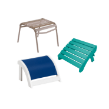





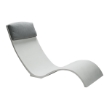







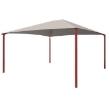
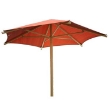
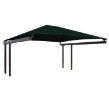

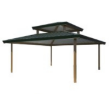
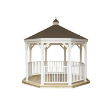
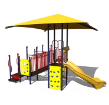











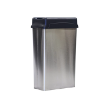
































Leave your comment